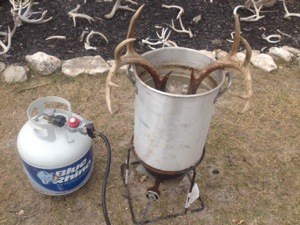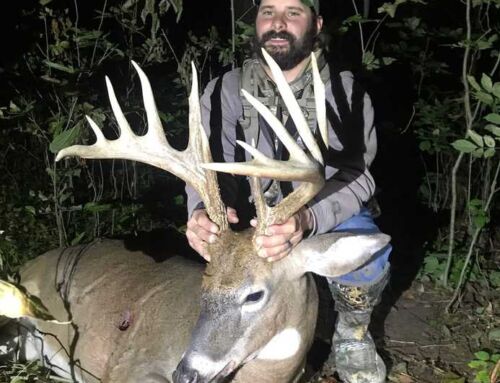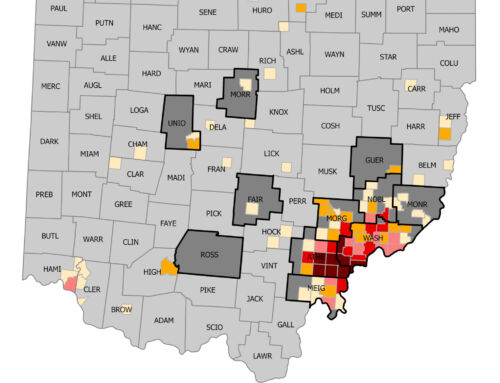Over the next 4 months, thousands of hunters will travel north to Alberta and Saskatchewan in search of big mule deer and whitetails. If your passport and paperwork are in order, getting into Canada with your bow or firearm is usually not much of a hassle.
But nowadays, if you’re successful, getting your buck back into the U.S. can be a major hassle unless you know and follow the ever-changing rules for transporting deer parts.
Chronic Wasting Disease (CWD) has been confirmed in wild deer in both Alberta and Saskatchewan, therefore CWD transport rules are in effect for bringing antlers, hides and meat back into every state in U.S. The rules:
–The Big One: Before leaving camp and crossing the border you must remove all brain and/or spinal tissue from the skull plate with antlers attached, as well as the raw cape. Thoroughly scraping all traces of brain and tissue from a skull plate should suffice, but it depends on the wildlife officer that checks you at the border. I recommend you boil the skull plate in water to remove all trace tissue. Flesh out the cape thoroughly, until it is entirely white.
–Crossing the border with a full skull and antlers (for a European mount) is tricky. All flesh and soft tissue on and inside the skull, including brain matter, must be removed. Also root structures and other soft tissue should be removed from all teeth. The CWD Alliance recommends cleaning a skull by soaking it in a 50/50 solution of chlorine bleach and water.
–Bowhunters heading to Alberta or Saskatchewan in September take note: Velvet-covered antlers are included in prohibited parts that you can transport.
—If you want to bring home some venison, you must completely de-bone the meat.
–Finished taxidermy products are not affected by the CWD ban. To forego the CWD and travel hassles, some hunters, including me, leave their bucks with Canadian outfitters. The outfitters take the deer to a local taxidermist for a shoulder or European mount. Eight months or so later, the taxidermist ships your buck back to you in the U.S. When all is said and done, this will cost you a couple thousand dollars (less for a European). But it’s the easiest way to get your buck home, no doubt. If you go this route, make sure your outfitter has a reputable taxidermist lined up!
CWD regulations are continually evolving. Before heading to Canada, or anywhere out of state to hunt, check the CWD regulations in your home state and any state you will travel through with deer parts on the way home.









How about a simple skull plate with the horns cleaned out well. That is easy and quick to do. Leave the cape in Canada, buy one from you taxidermist back home. Whitetail capes are generally pretty easy to come by, whether it’s your taxidermist or a friend. Taxidermists, at least mine, doesn’t charge much for a whitetail cape here. If you get a northern whitetail cape, it will match your Canada buck better…size, hair in the ears, etc. Thoughts?
Wow. Thanks for the information, Mike. Very helpful. CWD is changing everything about hunting deer. My state is evolving around that as well. So sad, really. Reality, though, I guess. It’s been found in MT as well and is changing how we all look at venison, especially my family as that is our primary source of meat. Also, Sask. is directly north of me.
I left a dark gnarly old buck rack 130″ or so in New Brunswick last fall because of all the hassles of bringing it back the only other time I have left trophies behind was on my second plains game hunt in Namibia. Sure makes it easier to be picky before pulling the trigger knowing it must be a “really special” buck to go home with me.
The NB outfitter told me to let the rack there and dry out he would nail it to a board and I could bring it home with me next trip.
Dang! I thought 5 Bills was enough for a mounted buck! But, you have to do what you have to do. Definitely something to think about for people who can’t afford to shell out that extra $$. This pushes a Canadian whitetail hunt to well out of my range as far as total package is concerned. Cool blog topic though.